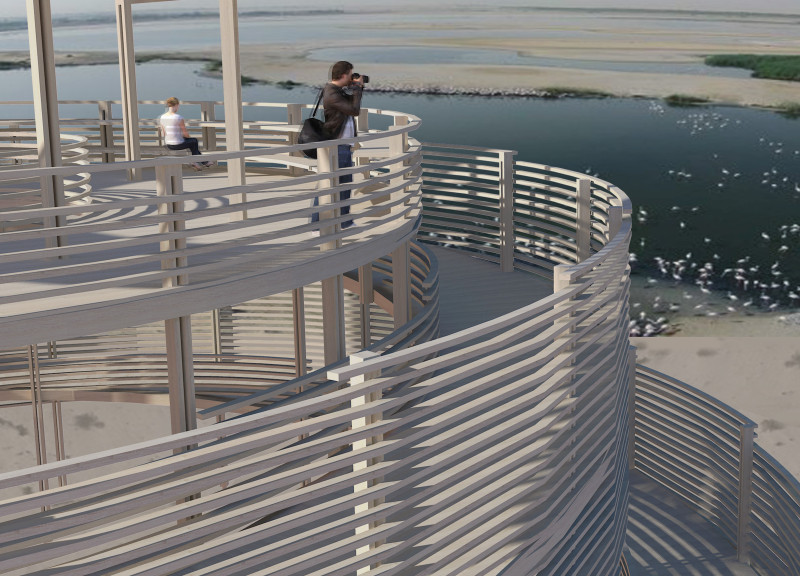5 key facts about this project
The Oasis Tower is located within the Al Wathaba reserve, a well-maintained man-made ecosystem that supports a diverse array of wildlife, including flamingos. The design focuses on accessibility and social engagement, addressing the need for spaces that allow for education and recreation in a unique desert environment. The concept is rooted in inclusivity and environmental awareness, aiming to create an inviting space for visitors to explore and learn about the surrounding nature.
Accessibility Features
Central to the design is a helical ramp that provides a gentle incline, making it easy for all visitors to navigate the tower. This feature removes barriers and enhances the visitor experience, allowing guests to feel connected to the landscape as they ascend. The ramp also offers a visual pathway, guiding people through the natural beauty of the reserve.
Social Engagement Spaces
The tower includes shaded areas that are designed to host a variety of groups, such as students, researchers, and tourists. One significant shaded area at ground level replaces an older pavilion and serves as a communal space for gatherings. Another shaded observation deck at the top provides a vantage point for visitors to take in the expansive views of the oasis, creating opportunities for relaxation and education.
Sustainability and Materiality
A strong emphasis is placed on sustainability through the choice of wood as the main material. This decision helps to limit environmental impact during both construction and operation. The design allows for structural elements that can be assembled without the need for heavy machinery, aligning with eco-friendly practices. This use of certified wood supports sustainable methods and contributes to the overall low environmental footprint of the project.
Aesthetic Integration
The design employs light-colored wood to blend with the desert surroundings. This choice helps the structure fit naturally within its environment while reinforcing the connection between the built space and the landscape. The helical ramp reflects local architectural elements and ensures that visitors experience a continuous relationship with nature as they move through the tower.
The unique perspectives offered by the observation deck invite visitors to engage with the landscape in a meaningful way. This connection between human spaces and nature encourages appreciation of the delicate balance that exists in the oasis, allowing for deeper reflection on the environment and architectural design.



















































